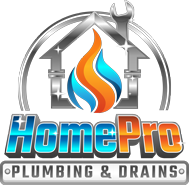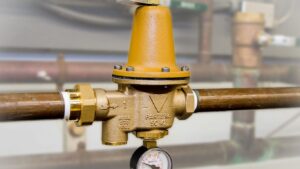▷5 Tips To Install Pressure Reducing Valve In San Diego
5 Tips To Install Pressure Reducing Valve In San Diego
Installing a pressure reducing valve (PRV) is a crucial step in maintaining optimal water pressure in your plumbing system. Whether you’re experiencing excessively high water pressure or looking to prevent potential damage to your pipes and fixtures, installing a PRV can be a wise investment. Here are five essential tips to ensure a successful installation process:
Assess Your Water Pressure
Before installing a pressure reducing valve, it’s essential to determine the current water pressure in your plumbing system. You can use a pressure gauge to measure the water pressure at various points throughout your home. Ideally, residential water pressure should be between 40 and 60 pounds per square inch (psi). If your water pressure exceeds this range, installing a PRV is recommended to prevent potential damage to your plumbing fixtures.
Select the Right Valve Size
PRVs come in various sizes to accommodate different flow rates and pressure requirements. It’s crucial to select a valve size that matches the flow rate and pressure needs of your household. Consulting with a plumbing professional can help you determine the appropriate valve size based on your specific requirements. Choosing the right size ensures optimal performance and longevity of the pressure reducing valve.
Locate the Ideal Installation Spot
The placement of the pressure reducing valve is critical for its effectiveness. It should be installed near the main water supply line where it enters your home. Ensure that there is enough space for the valve and sufficient access for maintenance purposes. Additionally, consider installing a strainer upstream of the PRV to prevent debris and sediment from clogging the valve and affecting its performance.
Follow Manufacturer’s Instructions
When installing a pressure reducing valve, it’s essential to follow the manufacturer’s instructions meticulously. Each valve may have specific installation requirements, so carefully read the installation manual provided by the manufacturer. Pay attention to details such as proper orientation, sealing techniques, and recommended tools to ensure a correct and secure installation.
Test and Adjust as Needed
Once the pressure reducing valve is installed, it’s essential to test its functionality and make any necessary adjustments. Use a pressure gauge to measure the water pressure downstream of the valve and ensure that it falls within the desired range. If adjustments are needed, most PRVs come with a built-in adjustment screw that allows you to fine-tune the pressure setting. Periodically check and adjust the pressure as needed to maintain optimal performance.
FAQs
How Do I Know If I Need A Pressure Reducing Valve?
If you experience consistently high water pressure above the recommended range of 40-60 psi, or if you notice signs of water hammer, such as noisy pipes or frequent plumbing leaks, installing a pressure reducing valve is advisable to protect your plumbing system.
Can I Install A Pressure Reducing Valve Myself, Or Do I Need A Professional Plumber?
While some homeowners with plumbing experience may be able to install a pressure reducing valve themselves, it’s recommended to consult with a professional plumber, especially if you’re unfamiliar with plumbing systems. A plumber can ensure proper sizing, placement, and installation to avoid potential issues.
How Often Should I Inspect And Maintain My Pressure Reducing Valve?
It’s recommended to inspect your pressure reducing valve annually for any signs of leaks, corrosion, or damage. Additionally, test the valve’s functionality and adjust the pressure setting as needed. Regular maintenance can help prolong the lifespan of the valve and prevent potential plumbing problems.
Conclusion
Installing a pressure reducing valve is a proactive step towards maintaining a healthy plumbing system and preventing potential damage caused by high water pressure. By assessing your water pressure, selecting the right valve size, locating the ideal installation spot, following manufacturer’s instructions, and testing the valve’s functionality, you can ensure a successful installation process. Consulting with a professional plumber and performing regular maintenance will further optimize the performance and longevity of your pressure reducing valve, providing you with reliable water pressure regulation for years to come.
Give Home Pro Plumbing a call right away to learn more about how our experts can help with leak detection in San Diego, CA.
Our Plumbing & Leak Detection Services
Related Posts

▷5 Benefits of Hydro Jet Plumbing: A Comprehensive Guide In San Diego
5 Benefits of Hydro Jet Plumbing: A Comprehensive Guide In San Diego Hydrojet plumbing is a…

▷Essential Tips for Installing a Heat Pump Water Heater In San Diego
Essential Tips for Installing a Heat Pump Water Heater In San Diego Did you know that…

